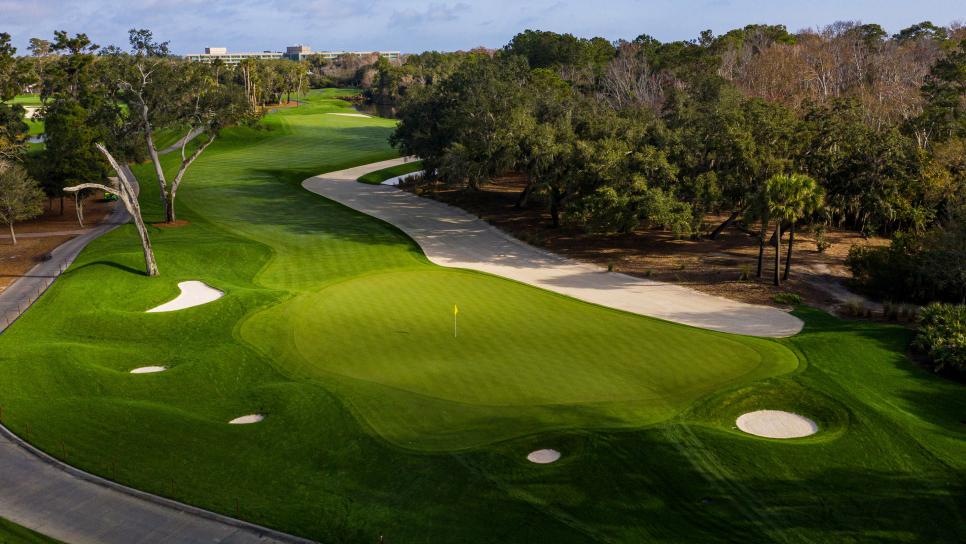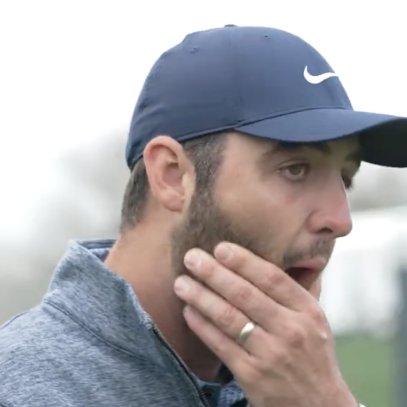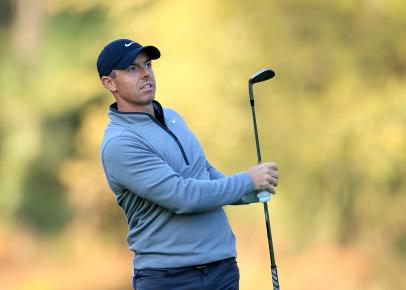With the exceptions of Augusta National, Pebble Beach and the Old Course at St. Andrews, perhaps no professional golf arena is more instantly recognizable than The Players Stadium Course at TPC Sawgrass. At a glance, golf fans can identify not just the climactic holes at the TPC—as it has commonly been called since its genre-bending architecture was unleashed on the world in 1980, and then upon the pros two years later—but also the critical shots needed to play them.
Almost everyone knows how the par-4½ 16th (even more of a par 4½ than Augusta’s 13th) can launch a championship run, how the island-green 17th can sink one and how the home hole is a coronation for winners who can survive it. But just to get into that final theater of the absurd with a chance for victory requires a long, gut-wrenching journey of well-played and well-thought-out maneuvers.
From Jerry Pate to Craig Perks to Rory McIlroy, past champions have seen their nerves tested by these lesser-known shots long before the final three holes were breached. From the very beginning at Sawgrass, there’s no flinching. Let’s take a look.
• • •
The drive at the par-4 first

Jack Nicklaus, commenting on the TPC in its early years, said, “I’ve never been very good at stopping a 5-iron on the hood of a car.” He might have been thinking about the green at the first—a shallow, inhospitable target angled over a bunker with a higher rear plateau. The shot was considerably more difficult when players actually were hitting 5-irons, but chances for success and a solid start remain contingent on a drive played alongside or past a yawning bunker on the right in order to open up an angle into the length of the green.
• • •
The approach at the par-4 fourth

A precision hole in every sense, the second shot into the fourth is set up by a controlled drive to the narrowest landing area at TPC Sawgrass. Those who find the fairway face a vital scoring opportunity with a short approach to a small green set across a canal, especially when the hole is cut in the bowl on the left or left-front. With that location, players can spin wedge shots off the slope for kick-in birdies and the occasional eagle.
• • •
The drive on the par-4 fifth

The tee shot at one of the most historically difficult par 4s on the course is played at a left-to-right angle across water to an elevated landing area. The line of attack is everything—drives played too conservatively risk running through the fairway into rough or a deep bunker, while weak drives to the right can find a waste area or, worse, the water. Only smoked drives moving with the shape of the hole will find the downslope that propels balls into a level spot.
• • •

Tour pros typically attack par 5s with little fear, but the second shot at the ninth continues to thwart normal expectations of birdie. The green is tucked to the left behind a bending line of mature oaks, forcing second shots to either go over the trees, be slung around them or even laid up back in the fairway. There’s no room for error because getting up and down from the four bunkers and deep hollows of rough surrounding the tiny, sloping green is anything but automatic.
• • •
The second shot at the par-5 11th

The 11th is a strategic masterpiece, forcing one of the most tantalizing decisions at the TPC. Finding the large fairway is not a problem, but at some point, either with the second shot or the third, the diagonal water hazard and deep moat bunker encircling three sides of the small putting surface must be challenged. Fortune-hunters are powerless to resist the aggressive play across the water with a long iron or hybrid, a choice that often results in touchy recovery shots from the sand below the green or the moguls behind it.
• • •

Similar to the fourth green, the putting surface at the 13th has high and low sections. Hole locations on the back upper tier are the most difficult to hit and hold, even when using 8-irons. But the real action occurs when the hole is cut in the bowl on the far left, close to the fronting water hazard. If played correctly, a central spine will feed balls slowly toward the cup, giving tour pros a reasonable shot at a kick-in birdie … or maybe even better.
• • •
The drive on the par-4 14th

The 14th has always been a round-wrecker that demands a long, accurate tee shot, just as the pressure of the tournament is mounting. Flares out to the right get tangled in steep, rough-covered mounds, while tugged drives can find a long strip bunker and poor approach angles blocked out by a stand of trees. Modern equipment has taken some of the bite out of this hole, but missing the fairway continues to accentuate odds for bogey.
• • •
The second shot on the par-4 15th

Recent changes have stiffened the drive on No. 15, but the pros still advance on the green with short irons. They need them because the putting surface presents a number of distinct, smaller platforms that slope in different directions. A slough cutting into the right side of the green sucks balls into it from all directions, but when the hole is there it can also produce short birdie putts that propel contenders into that crucial final stretch.
EDITOR'S NOTE: This story first ran in March 2020.



